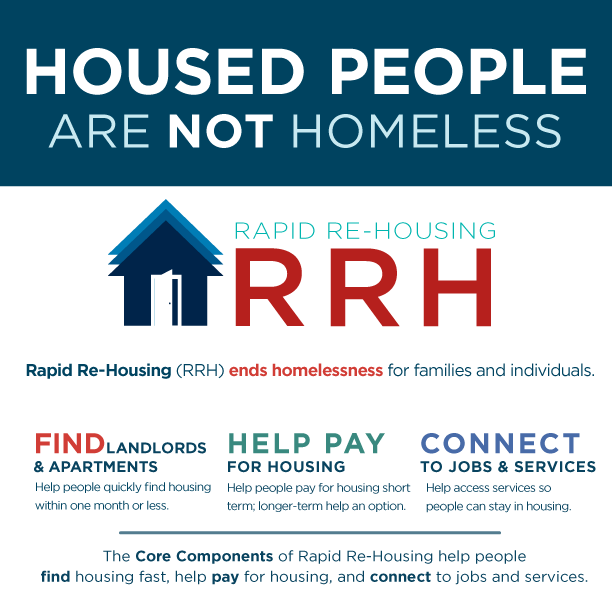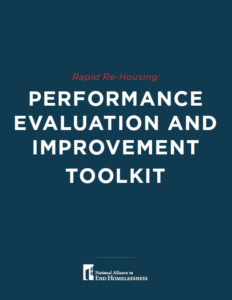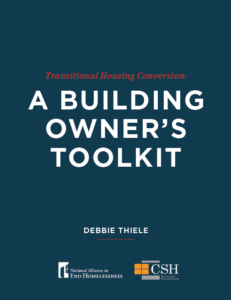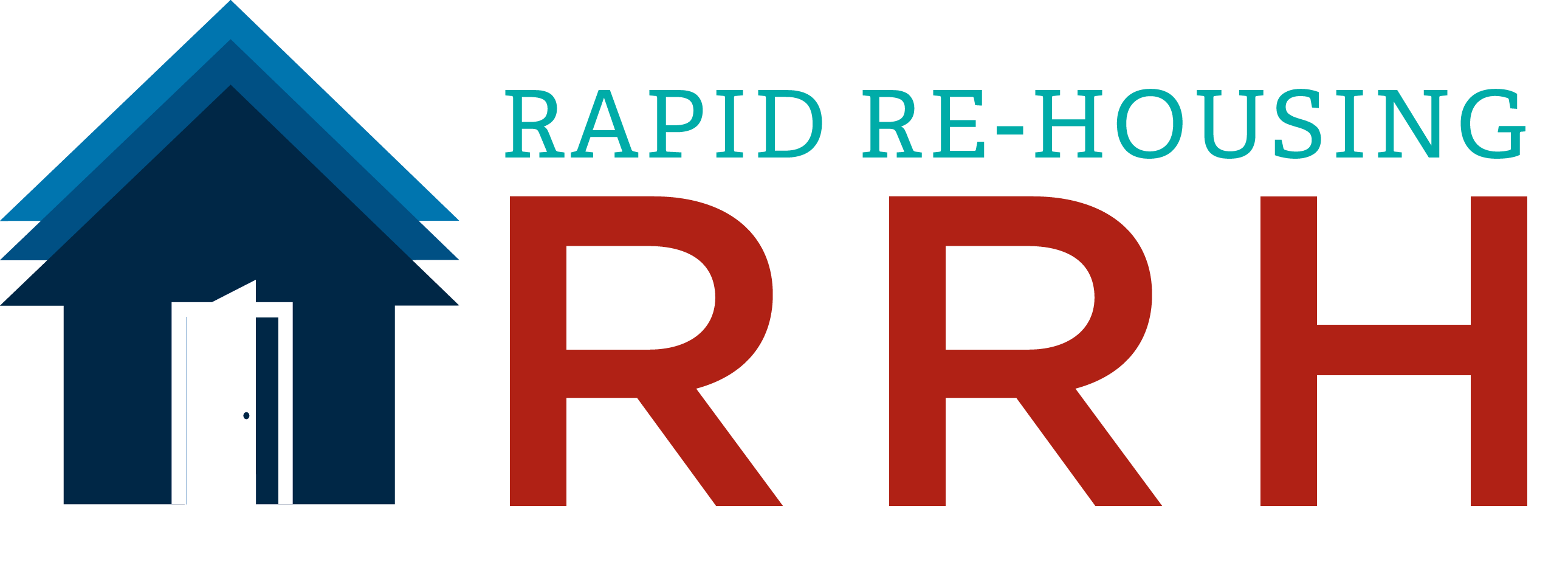
Rapid Re-Housing is a solution to homelessness designed to help individuals and families to quickly exit homelessness and return to permanent housing. It is offered without preconditions (such as employment, income, absence of criminal record, or sobriety) and the resources and services provided are typically tailored to the unique needs of the household.
VIDEO: What is Rapid Re-Housing?There are three core components to Rapid Re-Housing. While a program must make all three available, it is not required that a single entity provide all three services or that a household utilize them all.

The goal of housing identification is to find housing for people quickly. This can be a challenging task, especially in high-cost, low-vacancy markets. Programs should recruit landlords continuously, even before you have people who need housing. The more partnerships you create now, the greater the opportunity you will have later to rapidly house those that need it.
Your Rapid Re-Housing program should designate housing identification staff members who can find and recruit landlords willing to rent to those served by your program.
And finally, match participants to appropriate housing. This is housing that is decent, safe, will be affordable after assistance ends. One critical aspect of this step is choice: make sure the individual or household has a choice in their housing.
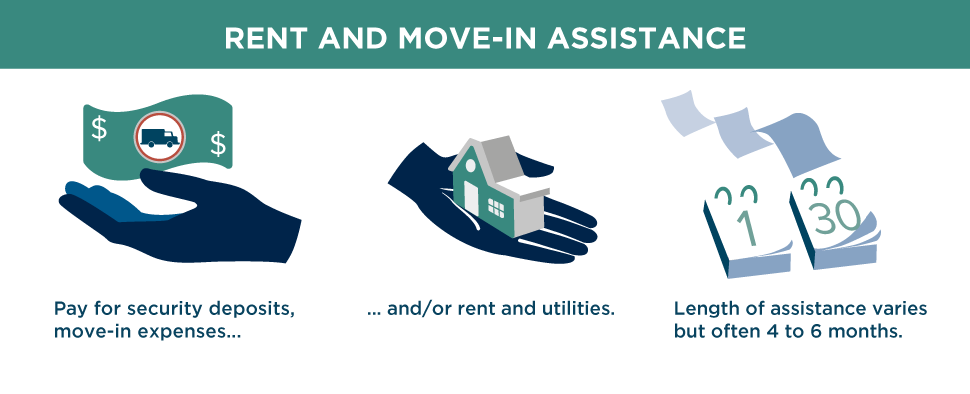
The goal of rent and move-in assistance is to help with the costs associated with getting into housing. The amount and duration of this assistance varies, but at a minimum, it should be enough to help people secure a place to live.This assistance shouldn’t be a standard “package” but flexible in order to meet unique needs. This is particularly important when financial circumstances or housing costs change.
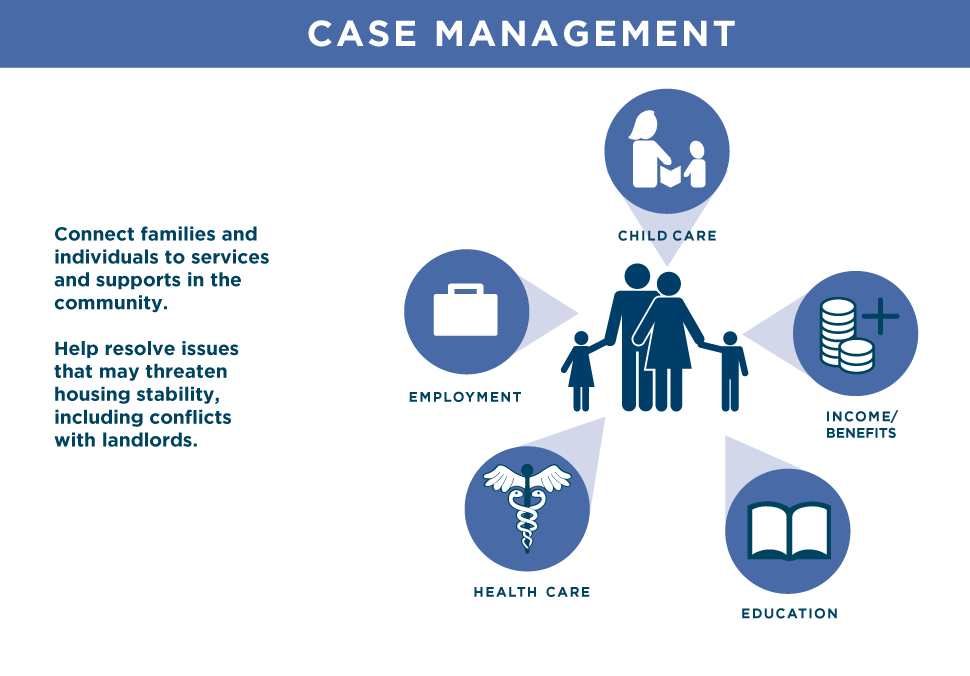
The goal of Rapid Re-Housing case management is to help stabilize people once housed, by connecting them to services and supports if needed. It should focus on helping people navigate barriers that may stand in the way of securing and maintaining housing, and should also strive to build a support system by connecting them with people and programs in the community.
Rapid Re-Housing assistance should end and the case closed when the individual or family is no longer facing the threat of homelessness, but case management may continue if appropriate or requested.
Models of case management for Rapid Re-Housing include Critical Time Intervention (CTI). CTI and Rapid Re-Housing are complimentary interventions and CTI is well-suited as a case management model in support of Rapid Re-Housing with individuals and families experiencing homelessness. CTI for Rapid Re-Housing is a time limited evidence-based practice that mobilizes support for vulnerable households during periods of transition.
Must Have Resources
Looking to integrate Rapid Re-Housing into your system or measure the success of your current program? Check out our newest resources that are a must-have for any system.
Are you looking for additional guidance on how to incorporate the new guidelines or a good, simple breakdown of what they mean? If so, this webinar is for you.
The impact of homelessness is real and for children, significant. Listen to one family talk about how rapid re-housing has improved their unity and vision of the future.
Looking for something else? Check out the Alliance’s Center for Learning page to see what other courses are available.

